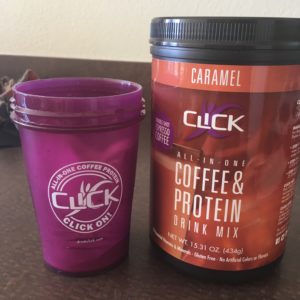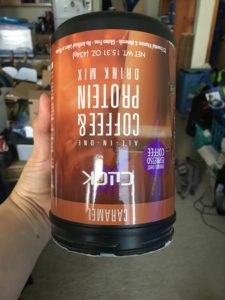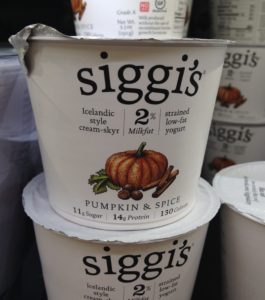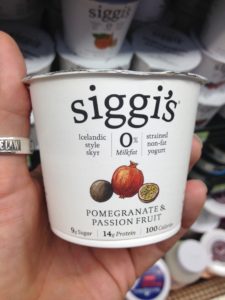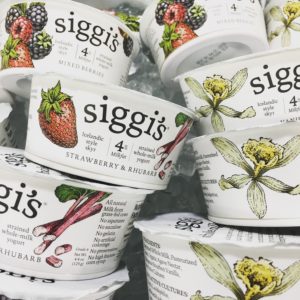On the THIRD Day of Christmas–yes, the Third Day…go ahead and google that, I can wait…I offer you a post about OATS. (Better than three French Hens, and easier to prepare, too.)
Why Oats?
Earlier this year, I used my first Inside Tracker test. (I’m reminded of this as I am about to take the next one on Friday.) Inside Tracker tests your blood for certain biomarkers–including the ones your doctor is interested in, such as triglycerides and cholesterol. Each is assigned to green (optimized), yellow (needs work), and red (take action immediately). Based on the results of the blood testing, as well as your goal input, Inside Tracker recommends specific actions you can take to improve those biomarkers (for example, to lower your cholesterol). These actions include food and supplement recommendations to move your biomarkers into the green zone.
One of the foods Inside Tracker recommended for me? Old fashioned rolled oats. Inside Tracker described the purpose like this: “Oats are high in soluble fiber, which can reduce cholesterol levels and raise HDL. A serving is 1/2 cup raw or 1 cup cooked. Enjoy one serving each day.” Being the nerd I am, I immediately started in on the research.
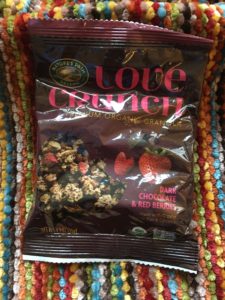
Dietary Fiber: Soluble v. Insoluble v. Resistant Starch
First, let’s talk fiber. As I recall, fiber only had two types when I took my freshman nutrition class, but now there are three? Actually, that depends on which source you consult. (If you’re truly interested, the Wikipedia entry on Dietary Fiber breaks it all down for you.) Dietary fiber comes from plants: fruit, vegetables, legumes, and whole grains. In general, dietary fiber is a carbohydrate component of food that cannot be completely broken down by your digestive system.
Soluble fiber dissolves in water and makes a gel-like substance. According to the Mayo Clinic, soluble fiber is helpful in controlling blood sugar and can help reduce cholesterol. Sources of soluble fiber: oats, barley, flaxseed, peas, beans, apples, citrus fruit, carrots, psyllium. As the FDA points out, soluble fiber is broken down by bacteria in the intestines, and does provide some calories to the body as a result.
Insoluble fiber does not dissolve in water. This is the fiber that makes up the bulk of feces. It helps move material through your digestive system. Sources of insoluble fiber: whole wheat, wheat bran, beans, cauliflower, green beans. This type of fiber passes through the body undigested, and is not a source of calories.
Resistant starch is a type of insoluble fiber. It can be fermented in the gut. Resistant Starch develops during the heating and then cooling of some foods such as potato, pasta, and rice; it also exists in raw bananas. There are also some grains that were developed specifically for their high resistant starch levels including high amylose corn and high amylose wheat. Foods high in resistant starch often have a low glycemic index, which means they have a relatively lower impact on blood glucose levels.
Sources of fiber. For a list of foods that are good sources of fiber, check out this list by Today’s Dietician.
In addition to positive affects on blood sugar and cholesterol, dietary fiber also regulates bowel movements, and helps create a sense of satiety so you feel fuller when eating less than you would (if you only had low-fiber foods). Fiber also slows the passage of food through the digestive system, which helps you feel full longer after you eat. Researchers are looking at the effects of a high-fiber diet on risk for colon cancer, and how fiber affects the microbiota in the gut, which has implications for obesity prevention. (PubMed has at least a dozen articles on this research.)
All About Oats
As a vegetarian, of course I appreciate fiber–most of what I eat should fall into the high-fiber category, right? Well, not exactly. Processing affects the amount of fiber in foods–and grain processing often removes the fiber! But I’m getting ahead of myself.
Oat basics. According to Harvard’s T.H. Chan School of Public Health, “Oats, formally named Avena sativa, is a type of cereal grain from the Poaceae grass family of plants. The grain refers specifically to the edible seeds of oat grass[.]” Their page on oats states oats are high in both soluble and insoluble fiber, phosphorus, thiamine (also called vitamin B1), magnesium, and zinc. For more, check out Harvard’s page on oats.
More about oats.Oats require a cold climate to grow. Oats do not exist as a Genetically Modified Organism or GMO, so if you are buying oats that have a non-GMO label, you’re paying extra for that label which could be applied to every oat in the universe. Oats themselves have no gluten, and are therefore gluten-free. However, if you have Celiac Disease you should proceed with caution and only purchased oats that are certified gluten-free. This is because (1) oats can be contaminated if they are grown on a field that previously had a gluten-containing crop on them, and (2) oats processed in a facility that also processes gluten-containing products may be cross-contaminated. (Thanks to the Prairie Oat Growers Association for this data.) Finally, there is some evidence that some people with Celiac Disease may have adverse reactions to oats. This may be because oats contain a protein called avenin, which is similar to gluten.
Types of oats. The Oldways Whole Grains Council has a wealth of information on oats, and has photographs of each of the types of oats, which is helpful in understanding the difference.
- Whole Oat Groats are the entire grain kernel. They take a long time to cook, and are usually only found in health food stores. If you harvest oats and then take off the hull, that’s a whole oat groat.
- Steel Cut Oats are whole oat groats that have been cut into pieces (using steel, right?). Irish Oatmeal is steel cut oats.
- Stone Ground Oats are whole oat groats that have been ground up using stones (traditionally) instead of cut with blades. This results in smaller pieces and a creamier texture when cooked. Scottish Oatmeal is stone ground oats.
- Rolled Oats are whole oat groats that have been steamed and then smashed flat. This turns them into flakes. When you see oats in oatmeal cookies, those are usually rolled oats. Rolled oats are also called old fashioned oats.
- Quick Oats and Instant Oats are rolled oats that have been steamed longer and/or ironed into thinner flakes. This makes them cook faster, but changes the texture. Quick oats/instant oats ARE whole oats, and therefore a whole grain.
- Oat Flour is whole oat groats that have been ground into a flour.
Some non-whole grain forms of oats include oat germ and oat bran. Prior to doing this research, I didn’t realize that rolled oats and quick oats have the same exact content as stone ground oats! Did you?
Research on the benefits of oats
Harvard’s page on Oats (linked above) identifies all sorts of neat health benefits:
- Beta-glucan (the primary type of soluble fiber inoats) slows digestion, increases feelings of fullness, and suppresses appetite
- Beta-glucan can bind to cholesterol and help move it out of the body
- Phenolic compounds and phytoestrogens are antioxidants that reduce chronic inflammation associated with cardiovascular disease and diabetes
The Harvard page also identifies specific studies about oats and heart disease, diabetes, weight control, and digestive health. The Whole Grains Council—which has more of an interest in promoting the health benefits of oats than Harvard’s School of Public Health—has a page with descriptions and links to studies that reach the following conclusions about oats and health:
- Oats may reduce asthma in children
- Oats may boost nutrition in gluten-free diets
- Oats increase appetite-control hormones
- Oat beta glucans improve immune system defenses
- Oats help cut the use of laxatives
- Oats may help reduce the risk of Type 2 Diabetes
- Oats may improve insulin sensitivity
- Oats lower bad cholesterol
- Oats help control blood pressure
Adventures in Oats!
Since eating more oatmeal cookies would make me happy but not necessarily advance my health goals, and I don’t have time to cook steel cut oats every morning, I looked into other ways to eat more oats. My initial foray into making “overnight oats” via an online recipe turned out to be…disgusting, in a word.
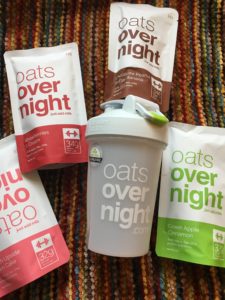
Oats Overnight.
Since my own overnight oats were terrible, I decided to try some pre-packaged ones. Unlike other types of overnight oats, Oats Overnight is intended to be drinkable. The main ingredient is whole rolled oats. Preparation involves putting a packet into a Blender Bottle minus the plastic blender ball, and adding milk or a liquid of your choice. Pop it in the fridge overnight and poof! Breakfast! Pros: Added protein. Easy to prepare. There are now a variety of flavors including three vegan options that use pea protein. The oats are certified gluten-free. The “classic” flavors are made with whey protein and the mocha flavor has caffeine. Shaker bottle can be reused an infinite number of times (unless you leave it somewhere hot with milk still in it, in which case the plastic might take on a permanent odor). Cons: If you like to chew your breakfast, this is not your best option. Individual serving packets are not recyclable.
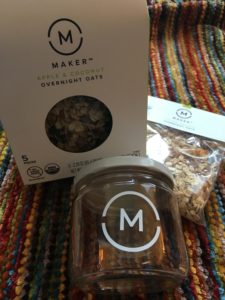
Maker Oats.
Another type of overnight oats, the Maker Oats starter kit comes with a glass jar, but you could easily use any jar (so long as you don’t add too much liquid). Similar to Oats Overnight, you put a packet in the jar, add your milk or plant-based milk, shake, and stick it in the fridge. Poof! Breakfast! The main ingredient is thick cut rolled oats. The consistency is much thicker and more substantial than Oats Overnight. The starter set includes a jar and packets, otherwise you buy a box with packets. Pros: Thick, spoonable oats. If you like them hot, you could easily heat them in their jar (just watch out as glass gets hot). You may find that a single “serving” is enough for two breakfasts. Maker Oats also contain chia seeds. Cons: So far there are only three flavors, so you might get bored. No added protein, so if you use plant-based milk or nut milk this is not a high-protein breakfast. If you have Celiac Disease, these may not be your best choice as they are not certified gluten-free. Like the others, individual serving packets are not recyclable. To date, these are my favorite!
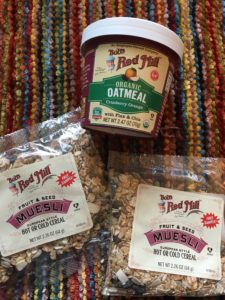
Bob’s Red Mill.
I live in Oregon–how could I not love employee-owned Bob’s? Bob’s Red Mill makes a variety of products containing oats. There are single-serve oatmeal cups (pineapple coconut, fruit and seed, cranberry orange, classic, and gluten-free varieties: blueberry hazelnut, brown sugar & maple, apple cinnamon oatmeal) and bagged multi-serve oatmeal (regular rolled oats, thick rolled oats, steel cur oats, Scottish oatmeal, old fashioned rolled oats, quick rolled oats, and several gluten-free varieties). Pros: multiple options, including both flavored oatmeal and plan oats. Sign up for the mailing list and get coupons by mail. If you’re not into oatmeal, you can try the museli, which also contains oats. Most of the oatmeals also contain flax and chia seeds. Cons: the flavored varieties tend to be higher in sugar than either Maker Oats or Oats Overnight. The single-serve cup packaging is not reusable.
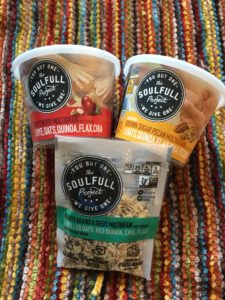
The Soulfull Project.
The Soulfull Project is a certified B-Corporation. The Soulfull Project’s cereals are all multi-grain; as far as I can tell, they all have rye, oats, quinoa, flax, and chia (but I didn’t examine every label so this might not be 100% true). Their big selling point is that for every serving they sell, they donate a serving to a food bank or other community-based group fighting hunger by providing meals, and you can see where their donations go on the website. The Soulfull Project products come in single-serve cups, 5-packs of single servings in plastic bags, and in multi-serving pouches. Pros: All of the products are vegan. Some products are certified gluten-free. If you don’t add too much liquid, the resulting cereal is thick and sticks to your spoon. Single-serve plastic cups might be recyclable (depending on where you live). Cons: The flavored products tend to be higher in sugar than Maker Oats and Overnight Oats (up to 12 grams of sugar).
The Giveaway!
There is ONE prize pack up for grabs to one winner with a United States mailing address. (Sorry international friends, but postage is dear and I don’t know what the rules are for shipping food to various other countries.) This prize is not sponsored by any company or brand, though I received some (but not all) of the contents at trade shows. Contents:
- Oats Overnight Blender Bottle and 4 individual packets (chocolate peanut butter banana, strawberries & cream, green apple cinnamon, peach upside down cake) (retail value: $22.00)
- Maker Oats, apple & coconut (one serving package) (retail: $2.00)
- The Soulfull Project 4 Grain Blend, full size (retail: $6.50)
- Bob’s Red Mill Oatmeal cup (cranberry orange one serving package)
- Bob’s Red Mill Fruit & Seed Muesli, 2 servings (one serving packages)
- Grandy Oats original Coconola coonut granola, grain free (sample size)
- Better Oats Steel Cut Oats, maple & brown sugar (one serving)
- Nature’s Path Love Crunch dark chocolate and red berries (sample packet)
